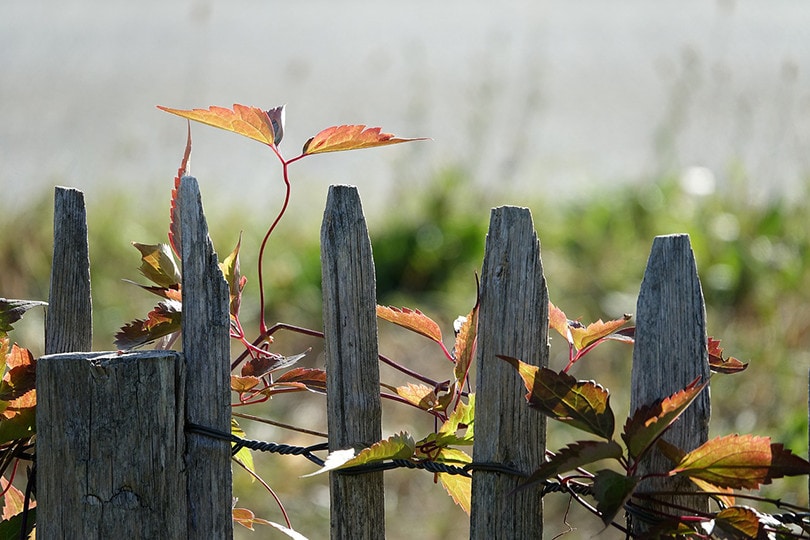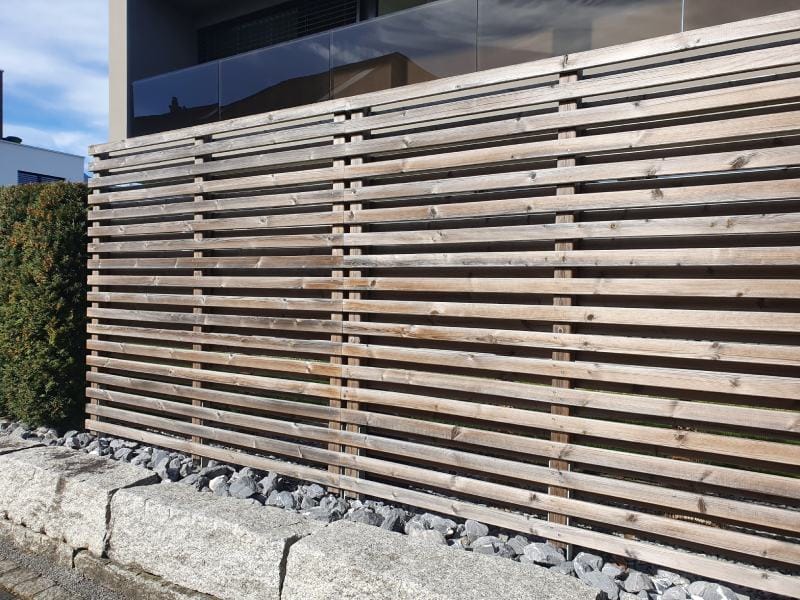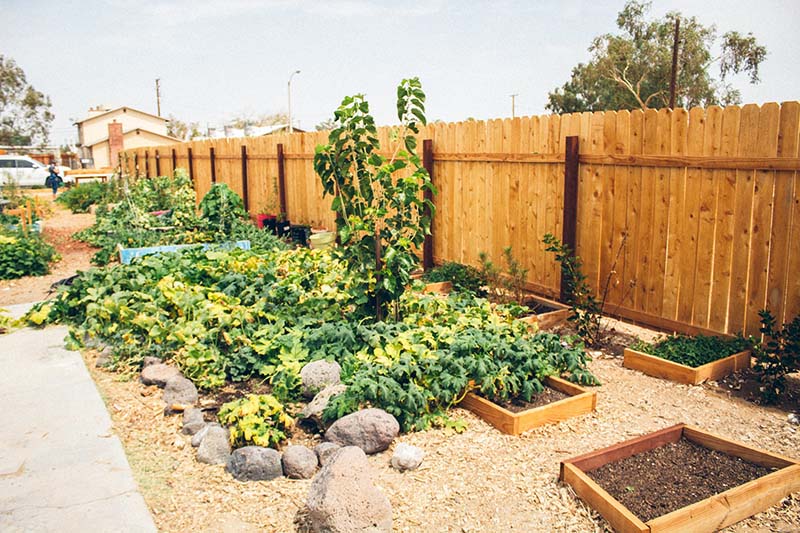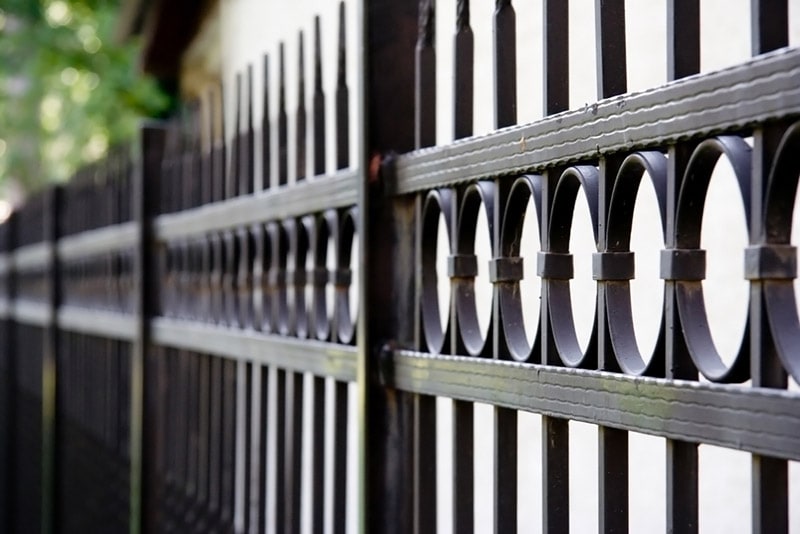8 Different Types of Wood Fences (With Pictures)
-
Pete Ortiz
- Last updated:

Whatever the material and whatever the style of fence, the aim is to provide privacy, mark boundaries, and to offer some protection from the elements and the environment. All wooden fences have the same basic parts. They use stakes or posts that are dug into the ground, for stability, and horizontal boards connect between the posts and support pickets, lattice, or some other type of screen. While these components are common in all fences, they can differ greatly in their design and style.
The 8 Different Types of Wood Fence Styles
Below are 8 different types of wooden fence, including details of their design as well as any potential pros and cons regarding each.
1. Picket Fence
The wooden picket fence is the epitome of middle-class suburbia. It is a short fence and one that is taller than about 4 feet tall can start to look like a barrier. The design is simple and while the pickets have a gap between them so the fence should withstand wind, which will pass through the gaps and not force the panel over. Although they do not provide much privacy, picket fences are inexpensive, decorative, and they can prevent small children and dogs from getting out of a garden. They have a traditional look, although they can be painted and combined with solid planting to give a more modern feel.
- Inexpensive
- Decorative
- Wind resistant
- Can be repainted for a different look
- Regular maintenance required
- Does not provide privacy
- Doesn’t provide security
2. Post and Rail

Post and rail fencing is another iconic option, commonly seen in classic movies surrounding ranches and farms, and this is the most common use for the very simple post and rail fence. They prevent livestock from being able to roam and are generally considered functional, rather than ornamental. Horizontal posts are usually placed 6 feet apart and are 5 feet tall. They can have two, three, or four horizontal rails and may include struts to prevent the rails from sagging. They do prevent large livestock from roaming outside borders, but do little to stop dogs and cats, and they offer no privacy.
- Prevents livestock getting out
- Simple to construct and maintain
- Wind resistant
- Relatively inexpensive
- No privacy
- No security
- Functional, rather than ornamental
3. Lattice
Lattice fences combine some utility with traditional design. The lattice panels feature diagonal slats that cross one another. The blank spaces in the lattice can be used to train climbing and other plants and they also enable air and light to get through, giving a greater sense of space in the garden. These are typically used to create sections in your own garden, because the do not provide privacy around a garden thanks to the holes in the panels. However, they do withstand the wind well.
- Ornamental
- Can be used to train plants
- Can be painted to change design
- Prevents dogs from escaping
- No privacy
- Need regular maintenance to upkeep
4. Louver

The louver fence has narrow horizontal slats that are slanted and placed close together. They run down the entire length of the panel, which can be 6 feet tall. Although there is a gap between the slats, these panels do provide a good degree of privacy, while the gaps allow air and wind to pass through. Although there is some light between the slats, these panels can still look like a barrier, and it requires that you include good planting around the panels to get the best results.
- Offers privacy
- Affords security
- Air and light can pass through
- Shouldn’t blow down easily
- Can look like a barrier
- Require regular maintenance
5. Vertical Boards
Vertical board panels can range in height from a couple of feet to six feet or more. The layout of the vertical slats means that these panels do provide privacy, but it also means that they prevent light from getting through, as well as wind. Stopping wind is useful if you want to create a sun trap with no breeze, but it also means that the panels are more likely to blow down or blow away in high winds, and a little breeze can be nice in summer. The vertical slots can feel foreboding if you opt for tall panels in a confined space.
- Panels provide privacy
- They can minimize noise from roads
- Protect the garden from wind
- Easily blown over in windy conditions
- Prevent summer breezes
- Can be confining in a small space
6. Solid Panels

The solid panel usually has horizontal slices of wood overlapping, which means that there is no gap and no space between the slats. They prevent all light, air, and wind, so they do offer privacy and protection, but they also act as a sail against the wind so if they are exposed to high winds they can take off. Like vertical boards, this type of panel can minimize outside noise but also prevents summer breezes and can make a small garden feel even smaller.
- Offers privacy and security
- Reduces noise
- Prevents wind in winter
- Easily destroyed in high winds
- Stops fresh breezes
- Can make the garden feel a lot smaller
7. Woven Panels
Basket weave and other woven fence panels are very decorative, and they can also do a good job of increasing privacy and security, minimizing noise and wind, and providing a barrier. However, they do require regular maintenance, painting can be difficult because you have to try and get into the weave, and they tend to be more expensive than other fence types because of the amount of work that goes into making them.
- Very decorative fences
- Provide privacy
- Minimize noise and wind
- Pricey
- Maintenance is difficult
8. Composite Wood Fence

Composite wood is made up of sawdust and plastic and, in the case of composite wood fences, combined with wood posts. While they are not strictly wooden fences, they can provide a reasonable alternative that is still close to the original. The composite blend will last for decades and require much less maintenance and they can be painted, with a latex paint, ideally, to change the style and look. However, compositive wood fences don’t look like traditional wood, either, or they usually cost about double that of traditional wood.
- Can last 20 years or more
- Do not require as regular maintenance as wood
- Come in a variety of colors and styles
- Do not look like traditional wood
- Expensive
 What Kind of Wood Is Best for Fences?
What Kind of Wood Is Best for Fences?
There are many types of timber used in wood fence construction.
- Redwood is popular because it is very long-lasting and hardwearing, but it is expensive.
- Cedar is a common choice because its oils naturally repel insects and help protect against the weather.
- Cypress is another alternative but may be more expensive than Cedar.
- Treated pine is cheap, readily available, and easy to work with, making it a very common fencing material.
What Is the Cheapest Wooden Fence?
Treated pine tends to be the cheapest material, while the simplicity and minimal materials used in picket fences make them the cheapest style for residential properties. Post and rail fences are functional, and they are popular on ranches and farms because they do prevent livestock escaping but they are inexpensive to build and cheap to maintain.
What Is The Most Durable Type of Fence?
Wood looks attractive and is easy to replace, but it isn’t necessarily the most durable material. Depending on the type of fence you choose, the wood can rot if not treated annually, at least. It can blow down in high winds and livestock and animals can break down some wooden fences. Vinyl can give a similar appearance to designs like picket fences, but they do not require annual maintenance and they are more likely to withstand weather and other potential damage.
Conclusion
Wood fences look attractive, and the natural wood material should withstand the weather well, although they do require regular maintenance and staining. There are many different styles of wood fence available, which means that you will be able to find one that ideally matches the look of your garden and, above, we have included details of the most common to help you choose which is best for your home.
See also:
- 18 DIY Garden Fence Plans You Can Make Today (with Pictures)
- 10 Tips on How to Clean a Wood Fence Without a Pressure Washer (Step-by-Step Guide)
Featured Image Credit: Ueberauer, Pixabay
Contents


 What Kind of Wood Is Best for Fences?
What Kind of Wood Is Best for Fences?